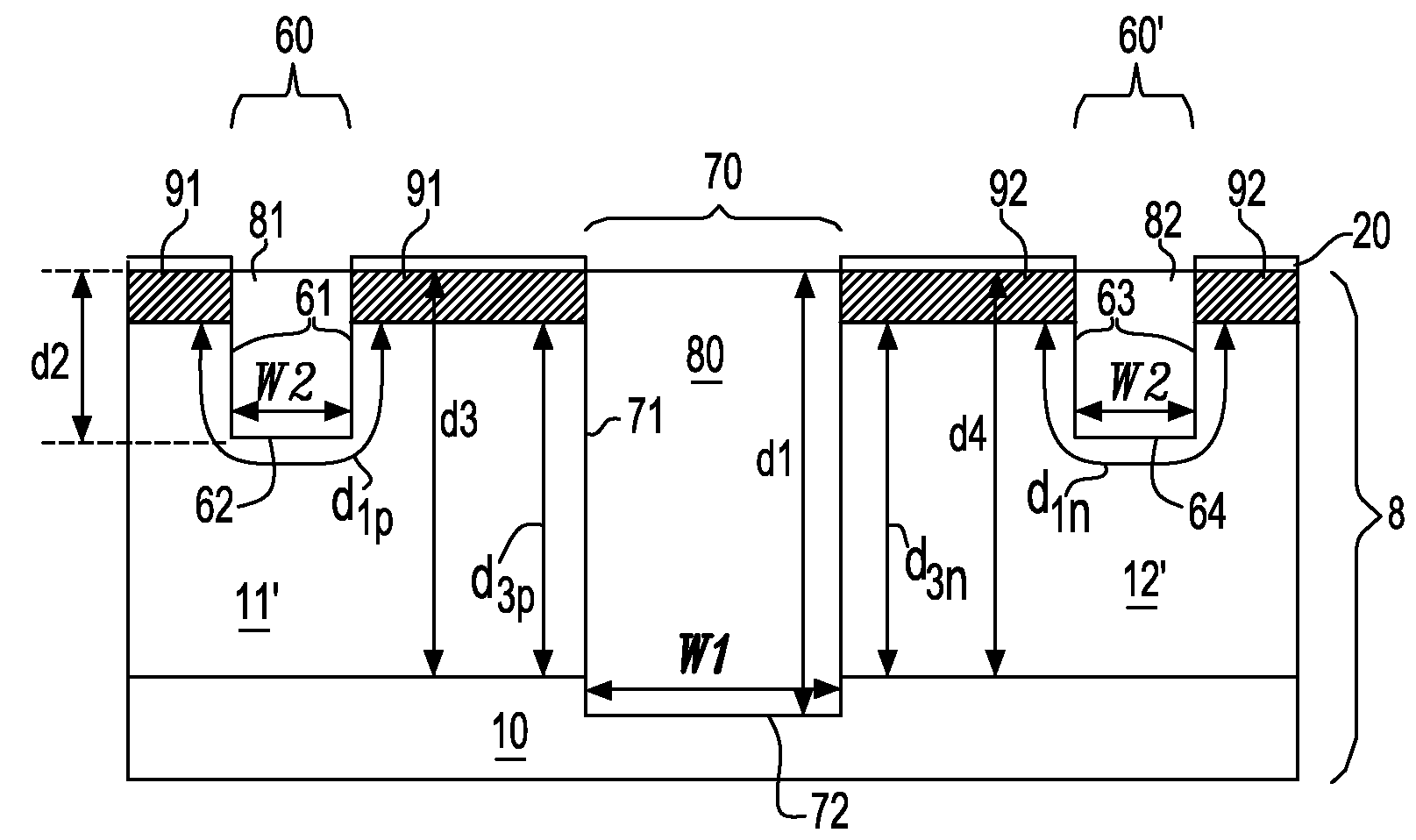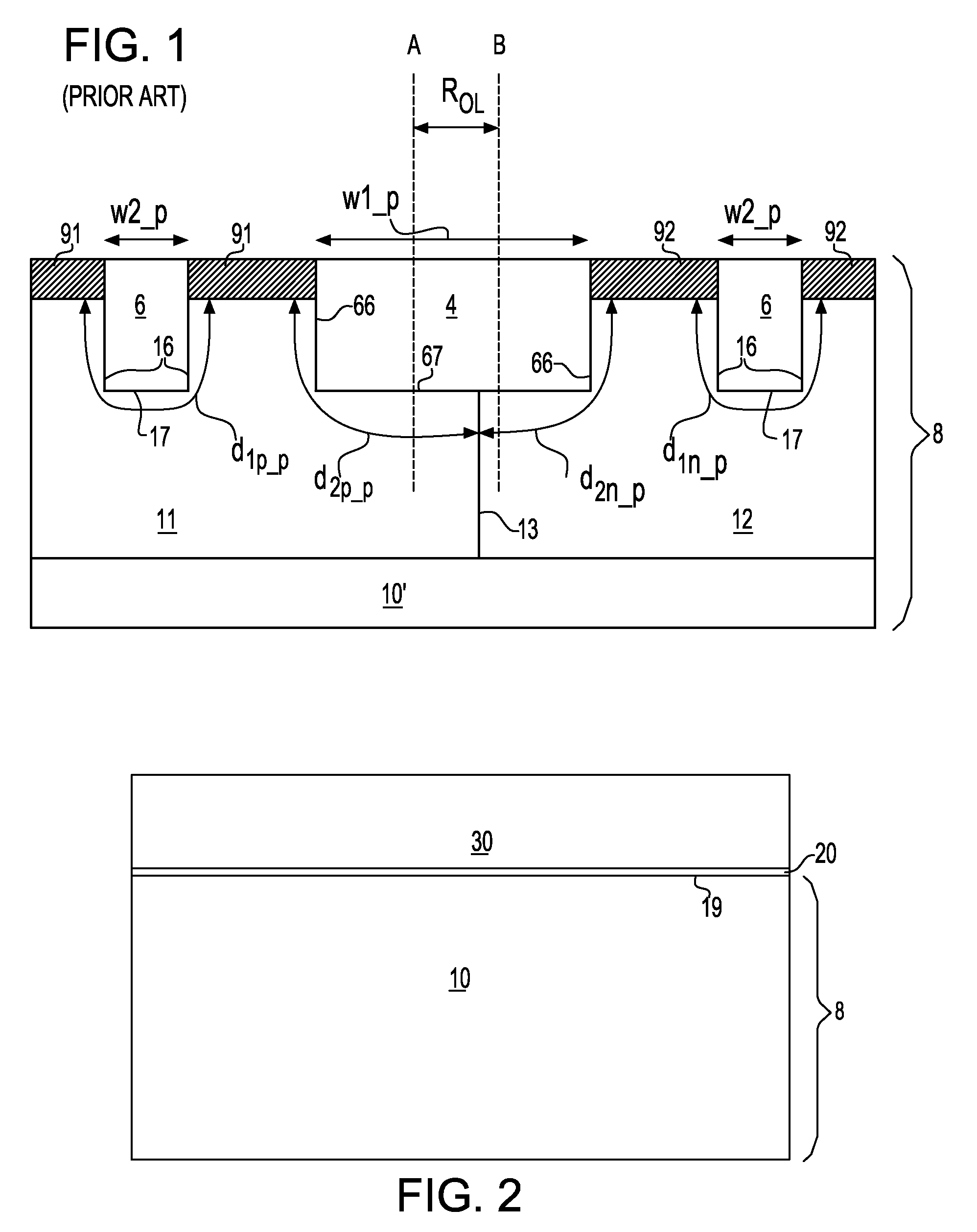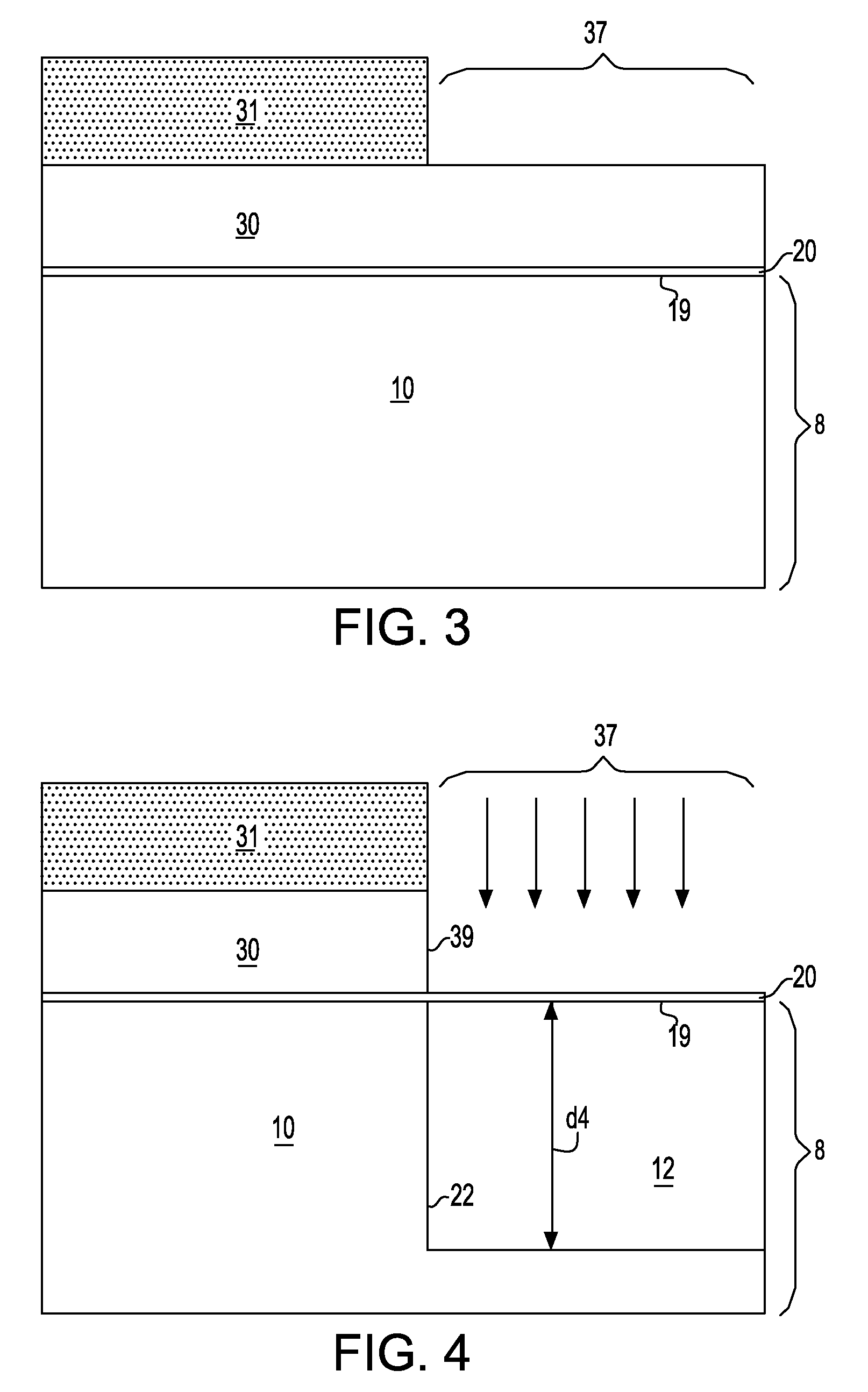Self-aligned and extended inter-well isolation structure
a self-aligning and inter-well isolation technology, applied in the field of intra-well isolation structure, can solve problems such as additional processing steps
- Summary
- Abstract
- Description
- Claims
- Application Information
AI Technical Summary
Benefits of technology
Problems solved by technology
Method used
Image
Examples
first embodiment
[0081]The first depth d1 is greater than the second depth d2 and the first width W1 is greater than the second width W2. In a variation of the first embodiment, the first intra-well isolation trench and the second intra-well isolation trench may have two different widths, which are less than the first width W1.
[0082]Both the third depth d3, which is the depth of the p-well 11, and the fourth depth d4, which is the depth of the n-well, are greater than the first depth d1. The p-well 11 and the n-well 12 abut the substantially horizontal first trench bottom surface 72.
[0083]Each of the vertical p-well to substrate layer interface 21 and the vertical n-well to substrate layer interface 22 is separated from one of the pair of substantially vertical first trench sidewalls 71 by a distance equal to the thickness of the extended pedestal layer 40. This is because the vertical p-well to substrate layer interface 21 coincides with the second pedestal sidewall 39′, the vertical n-well to subs...
third embodiment
[0108]The first depth d1 is greater than the second depth d2 and the first width W1 is greater than the second width W2. In a variation of the third embodiment, the first intra-well isolation trench and the second intra-well isolation trench may have two different widths, which are less than the first width W1.
[0109]At least one of the third depth d3, which is the depth of the p-well 11, and the fourth depth d4, which is the depth of the n-well, is less than the first depth d1. In other words, only the third depth d3 may be less than the first depth d1, only the fourth depth d4 may be less than the fist depth d1, or both the third depth d3 and the fourth depth d4 may be less than the first depth d1. At least one of the p-well 11 and the n-well 12 do not abut the substantially horizontal first trench bottom surface 72. If the third depth d3 is less than the first depth d1, the p-well 11 does not abut the substantially horizontal first trench bottom surface 72. If the fourth depth d4 ...
PUM
 Login to View More
Login to View More Abstract
Description
Claims
Application Information
 Login to View More
Login to View More - R&D
- Intellectual Property
- Life Sciences
- Materials
- Tech Scout
- Unparalleled Data Quality
- Higher Quality Content
- 60% Fewer Hallucinations
Browse by: Latest US Patents, China's latest patents, Technical Efficacy Thesaurus, Application Domain, Technology Topic, Popular Technical Reports.
© 2025 PatSnap. All rights reserved.Legal|Privacy policy|Modern Slavery Act Transparency Statement|Sitemap|About US| Contact US: help@patsnap.com



